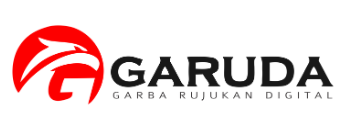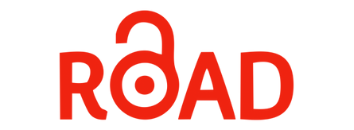Analytical Hierarchy Process Approach on Regional Product Competitiveness in Magelang, Central Java
DOI:
https://doi.org/10.24002/kinerja.v21i1.1035Abstract
This study aims to identify and analyze the data and information to determine the local featured products through the aspects of value-added, market expansion and production technology. The location is the town of Magelang in which there are many small and medium industries with a wide range of their products. The analytical tools used include common analytical technique used to determine a featured product. They are scoring, value chain and Analytical Hierarchy Process (AHP). The result of the study shows that the main criteria for weighting the featured products are competitive advantage, stakeholders' acceptance and societal benefits. Through all three criteria, there are three main local featured products becoming the. They are getuk (the result of processed cassava), kerupuk tahu (tofu crackers) and ceriping ketela (cassava crackers). Furthermore, through a comparative analysis of the criteria, it can be concluded that the product getuk can be considered as the Regional Industry Core Competence based featured product from Magelang.
Keywords: Analytical Hierarchy Proces, Regional Product, Competitiveness
References
Anonymous. Presidential Regulation No.8/2008 about National Industrial Policy.
Anonymous. Presidential Instruction No.6/2009 about Creative Economy.
Anonymous. Internal Affairs Minister Regulation No.9/2014 about Regional Featured Product.
Departement of Industry. 2007. Peta jalan pengembangan kompetensi inti industri daerah (Roadmap of regional industrial core competence develoment). Jakarta.
Bappeda Magelang. 2014. Kajian lingkungan hidup strategis (KLHS) kota Magelang (Strategic Environmental Assessment of Magelang).
Badan Pusat Statistik Kota Magelang. 2015. Kota Magelang dalam angka 2015 (Magelang in number 2015).
Churiyah, M and Sholikhan. 2016. Exploratory factor analysis: Entrepreneur development in the industrial center of sarung tenun ikat Lamongan. Journal of Economics and Sustainable Development, Vol.7, No.6.
Daryanto, A. 2010. Keunggulan daya saing dan teknik identifikasi komoditas unggulan dalam mengembangkan potensi ekonomi regional (Competitive excellence and featured commodity identification techniques in developing regional economic potential). Bogor: Institut Pertanian Bogor.
Donelan, Joseph G., Kaplan, Edward A. 2000. Value chain analyisis: A strategic approach to cost management. Thomson Learning.
Firmansyah, Erwin. n.d. Pengetahuan bahan – pohon industri umbi-umbian (Material Knowledge – tuber industrial tree). Retrieved from http://www.academia.edu/ 5030147/PENGETAHUAN_BAHAN_-_POHON_INDUSTRI_ UMBI-UMBIAN.
Hafeez, K., Zhang, Y., and Malak, N. 2002. Core competence for sustainable competitive advantage: A structured methodology for identifying core competence. IEEE Transactions on Engineering Management, Vol.49 No.1, 28-35. Retrieved from http://dx.doi.org/10.1109/17.985745.
Indahsari, K. 2010. Model penentuan kompetensi inti industri daerah (Studi kasus Kabupaten Bangkalan) [Determination model for regional industry core competence: A case study in Bangkalan Regency]. Jurnal Iqtishoduna, 6 (1).
Javidan, M. (1998). Core competence: What does it mean in practice? Long Range Planning, Vol.31 No.1, 60-70. Retrieved from http://dx.doi.org/10.1016/S0024-6301(97)00091-5.
Ministry of Industry. 2012. Buku petunjuk teknis penilaian, klasifikasi dan pembinaan produk OVOP (A manual on OVOP product evaluation, classification and development). Jakarta: Dirjen Industri Kecil dan Menengah Kementerian Perindustrian.
Ministry of Industry. 2011. Kajian kedalaman struktur industri yang mempunyai daya saing di pasar global, penguatan struktur industri dalam pengembangan klaster industri berbasis biomaterial (A study on competitive industrial structure in global market to strengthen industrial stucture in the development of biomaterial-based industrial clusters). Retrieved from www.kemenperin.go.id on August 15, 2016.
Kuncoro, M. 2004. Otonomi dan pembangunan daerah: Reformasi, perencanaan, strategi dan peluang (Autonomy and regional development: Reformation, plan, strategy and opportunity). Jakarta: Erlangga.
Langoday, T.,2011. Studi Kompetensi Inti Daerah di Kabupaten Belu Provinsi Nusa Tenggara Timur (A study on regional core competence in Belu Regency, Province of East Nusa Tenggara). Journal of Indonesian Applied Economics. Vol.5, No.1 Mei 2011, 28 – 43.
Lewis, M. 1995. Competence analysis and the strategy process. Cambridge: Engineering Department, University of Cambridge.
Meridian institute, innovations for agricultural value chains in Africa: Applying science and technology to enhance cassava, dairy, and maize value chains. (n.d). Retrieved from www.merid.org on August 15, 2016.
Sandriana, N., Hakim, A., and Saleh, C. 2015. Strategi pengembangan produk unggulan berbasis klaster di kota Malang (Strategy on cluster-based feature product development in Malang city). Reformasi, Vol.5, No.1.
Tampoe, M. 1994. Exploiting the core competences of your organization. Long Range Planning, 27 (4), 66-77.
Porter, M.E. 1990. The competitive advantage of nations. New York: The Free Press.
Prahalad, C.K. and Hamel, G. 1990. The core competence of the corporation. Harvard Business Review, vol.68, no.3, 79–91.
Nurcahyo, R., Maemunsyah, T.Y., Muslim, E. and Saparudin. 2011. Perancangan strategi pengembangan industri di Kabupaten Tangerang berbasis kompetensi inti (Planning on core competence based industrial development strategy in Tangerang Regency). Jurnal Manajemen Teknologi, Vol.10, No.3.
Rahmat, N., Farizal, E.S., and Saparudin. February, 2012. Penentuan dan pengembangan kompetensi inti Kabupaten Bekasi (Identification and development of core competence in Bekasi Regency). Jurnal Teknik Industri, Vol.13, No.1, 37–42.
Rahab, N. and Istiqomah. 2013 Local economic development strategy based on localindustrial core competence. International Journal of Business and Management, Vol.8, No.16, Published by Canadian Center of Science and Education.
Rose, C.M., and Kos, I. 2000. Applying Environmental Value Chain Analysis. Retrieved from www.deflt.ac.nec.
Simons, F., and Jones. 2001. The UK red meat industry: A value chain analysis approach. Retrieved from www.mlc.org.uk/forum/phasetwo/ on April 2004.
Shank, J.K., and Govindarajan, V. n.d. Strategic cost management and the value chain. Thomson Learning.
Soebagyo, D and Wahyudi, M. December 2008. Analisis kompetensi produk unggulan daerah pada batik tulis dan cap Solo di Dati II Kota Surakarta (An analysis of regional featured product on hand-drawn and stamped Solo batik in Local Level Government in Surakarta). Jurnal Ekonomi Pembangunan, Vol.9, No.2, 184-197.
Walsh, S.T. and Linton, J.D. 2001. The competence pyramid: A framework for identifying and analysing firm and industry competence. Technology Analysis and Strategic Management, 13(2), 165-78.
Weiler, J., and Schemel, N. 2003. Value chain and value coalitions. ICH White paper. Retrieved from www.ichnet.org on May 3, 2004.














